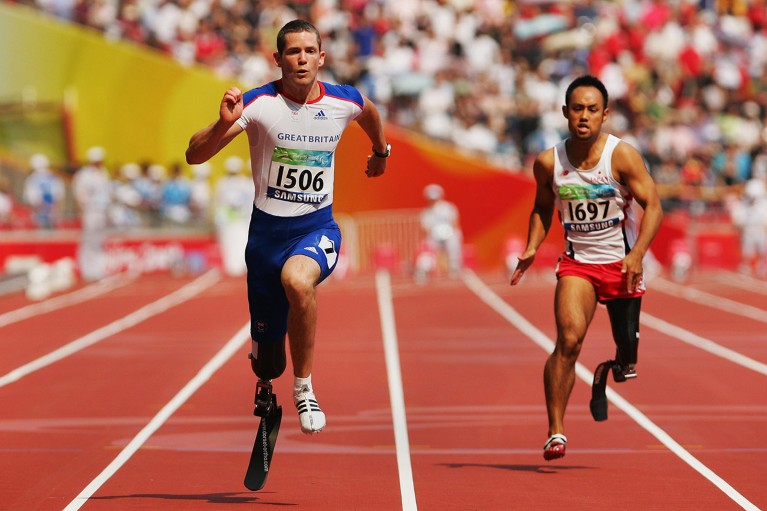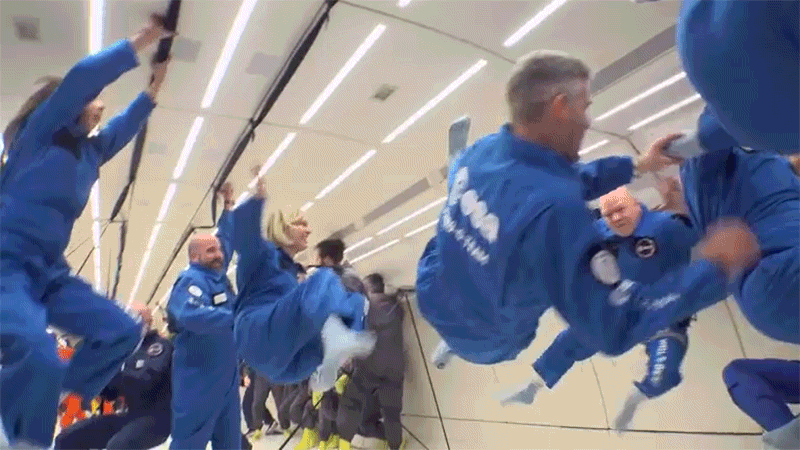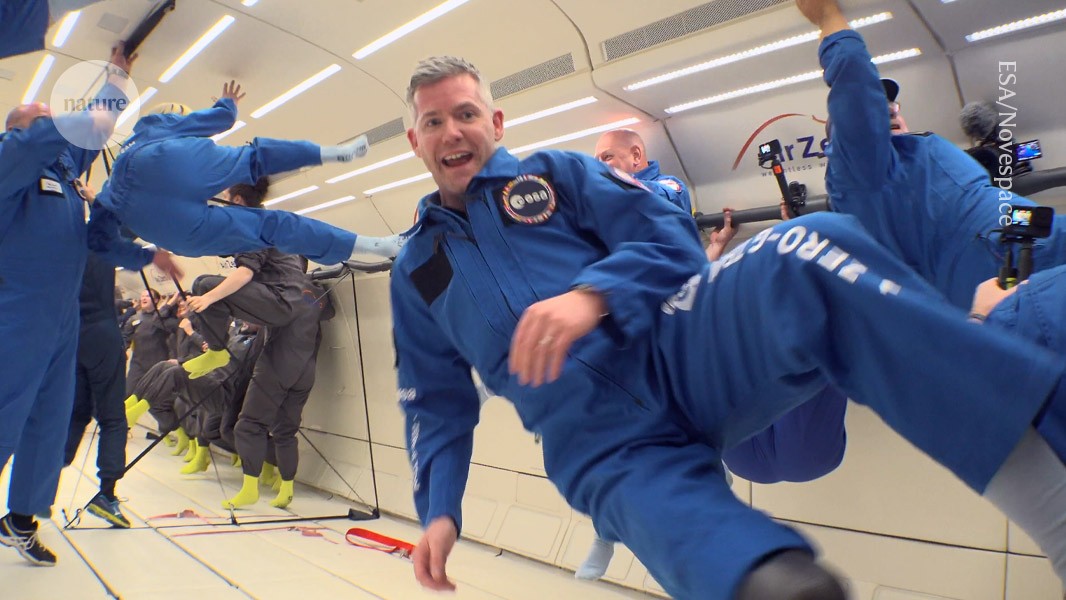Among those following the 2024 Paralympic Games, which kick off next week in Paris, will be John McFall, a former medallist who has since begun working with with the European Space Agency (ESA).
McFall made headlines in 2022 when he became the world’s first disabled astronaut, joining ESA’s astronaut reserve team. Before this, he enjoyed international success as a sprinter — winning a bronze medal in the 2008 Paralympics — and subsequently trained as an orthopaedic surgeon.
After a motorcycle accident as a teenager, McFall had his right leg amputated, and he now wears a prosthesis. He’s been participating in ESA’s ‘Fly!’ feasibility study, a project to assess the challenges a disabled person might face in space flight.
Nature spoke to McFall about the project’s importance, and its progress so far.
What made you want to become an astronaut?
Being an astronaut wasn’t on my radar originally. A colleague told me that ESA was recruiting for a new class of astronauts — uniquely, it was specifically looking to recruit someone with a physical disability. I’ve always been really adventurous and very curious about science and the way that things work.
When I saw the vacancy, I thought, “This sounds awesome!” The adventure, the challenge, the learning. And what a great opportunity, if it did ever turn into an opportunity to fly to space. One thing that really interested me was that ESA was asking if it is feasible to send someone with a disability into space on a long-duration mission. I thought, with my background and my skills, it would be awesome to help the agency answer this bold question.

McFall (left) won a bronze medal for the 100-metre sprint in the 2008 Paralympic Games in Beijing.Credit: Andrew Wong/Getty
Tell us about the Fly! study — what are its aims?
The study explores the technical feasibility of something like going to the International Space Station (ISS) for six months. Being in space for more than 30 days has particular requirements, such as dealing with the long-term effects of microgravity on the body.
The study looked at all the phases of space flight: what it takes to get off the ground, living and working on the ISS, and then coming back to Earth. We also considered the effects of training. ESA requires astronauts to do winter survival training, sea survival training, all these sorts of things. So we looked at different aspects of training and how I might use some of the platforms and equipment.
We also looked at the requirements of spacecraft and ISS operations — for example, assessing whether I can undertake all the safety and emergency procedures in the spacecraft. We did some parabolic, zero-gravity flights to look at whether I could move around in microgravity. And we did some assessments to make sure that my prosthesis would still fit and still be comfortable irrespective of changes in the size of my stump, because of the shift of fluid that you get in microgravity.
What were the results of the study and what are the next steps?
The study so far has demonstrated that it is technically feasible for someone with a physical disability like mine to fly to space and to live and work as a fully integrated member of the ISS crew for a long mission.
This part of the study will conclude towards the end of this year. The next stage, ideally, would be to move forward and get someone with a physical disability flying.
I hope that I get the opportunity to fly in the future. That would be tremendous. And I also hope that I can sow the seed for a legacy to follow on from, to look at the feasibility to fly with a wider range of disabilities.

Among other things, the reduced-gravity flights tested how McFall’s prosthetic leg behaved during weightlessness.Credit: ESA/Novespace
What has been your favourite part of the study so far?
My favourite bit was changing people’s preconceptions in the space industry of what people with physical disabilities are capable of. I’m proud that I’ve had that opportunity to demonstrate what we are capable of as humans. I also love the mountains in the winter, so winter survival training for me was great fun.
My least favourite part was probably sea survival training in the Baltic Sea. It was about 30 °C, and we were in full, hooded neoprene wetsuits, which was quite uncomfortable in that heat.
What have your experiences taught you about the importance of the Paralympics and ESA’s parastronaut programme?
Elite athletes inspire so many people. Lots of people do sport and have this admiration for what it takes to compete at the elite level. From the Paralympic point of view, it’s hugely important to connect with a wider audience, to make wider society aware of what people with physical disabilities are capable of.
In the same vein, I think you can probably consider being an astronaut as a difficult, challenging job. So there is that admiration there to have someone with a physical disability in this position. ESA is boldly going out and saying: we believe this is possible. We believe we can have someone with a physical disability performing the same duties as a professional astronaut. This is a tremendously powerful way to reduce stigma around disability, increase inclusivity and have healthy debates around what roles people would expect to see people with physical disabilities taking in society.
This interview has been edited for length and clarity.


